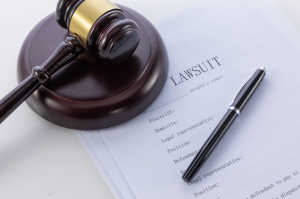Getting injured because of someone else's carelessness can change your life in ways you never expected. Suddenly, you're dealing with doctor visits, medical bills, missed work, and the uncertainty of what comes next. You might start hearing terms like “settlement,” “claim,” or “demand letter,” but it's not always clear what they actually mean.
Understanding how the personal injury settlement process works can make a stressful time feel a little more manageable and help you make smarter choices about your recovery and financial future.
While every case is different, most personal injury claims follow a similar path from the first consultation to the final payment. Here's what really happens behind the scenes, and what you can do to protect your rights along the way.
Start Building Your Injury Case the Right Way
Everything begins with a detailed look into how the accident happened and how it affected your life.
If you were hurt in a car accident, for instance, your car accident lawyer would begin by collecting key evidence like medical records, police reports, and witness statements. They'd also help you document the full scope of your injuries and financial losses, from hospital bills and physical therapy to missed wages and pain and suffering.
This part of the process can feel tedious, but it's essential. The clearer your evidence, the easier it is to prove how someone else's negligence caused your injuries. It also prevents insurance companies from minimizing your medical care or disputing your expenses later on. Having professional legal representation early on ensures your case is handled with precision, not pressure.

Know What Your Demand Letter Really Means
Once you've received the medical treatment needed to reach a stable condition, your attorney will prepare what's called a demand letter, essentially a formal explanation of your claim and the compensation you're seeking.
This document outlines how the injury occurred, your medical costs, property damage, lost wages, and even emotional distress or non-economic damages. It's your chance to tell your story with evidence and professionalism.
Insurance companies typically respond with a counteroffer, often lower than what's fair. Don't take it personally; it's a negotiation tactic. Your lawyer's job is to back up every part of your claim with solid proof like medical bills, test results, therapy notes, and even expert opinions, so the insurer understands that your claim holds weight.
Prepare for the Negotiation Stage
Most personal injury settlements are resolved through negotiation, not trial. But this part of the process can feel like a tug-of-war. Insurance companies want to save money, while your side wants to ensure every dollar reflects the true cost of your injuries and recovery.
During negotiations, your attorney will review every settlement offer carefully, comparing it to your documented losses and estimated future expenses. This includes not just economic damages, such as medical expenses or lost wages, but also the emotional toll: your pain and suffering, reduced quality of life, or anxiety stemming from the injury.
It's tempting to accept the first offer just to end the waiting, but patience often pays off. Settling too soon can mean losing out on compensation for long-term medical treatment or physical therapy you might still need.
Understand How Settlement Values Are Calculated
There's no set formula for calculating personal injury settlements, but certain factors carry a lot of weight. The severity of your injuries, the length of your recovery, and how the incident disrupted your everyday life all influence the final number.
Your attorney typically considers both economic damages, the tangible costs like hospital bills, rehabilitation, and lost wages, and non-economic damages, which cover the pain, emotional distress, and lifestyle changes that can't be measured with receipts.
In uncommon situations, punitive damages may also be considered if the responsible party's behavior was especially reckless or harmful. Still, in most injury cases, the main objective is to reach a fair settlement that adequately supports both your current recovery and any future medical or financial needs, without the stress of going to trial.
Read Before You Sign the Settlement Agreement
After both sides agree on a fair number, your attorney will draft or review the settlement agreement. It's the official document that closes your case. Signing it means you're accepting the agreed payment in exchange for giving up the right to pursue further claims related to the same incident.
It's crucial to read this document carefully before signing. Once it's done, the case is legally over. Even if new medical issues appear later, you won't be able to reopen the claim.
This is also when practical details are finalized, such as whether you'll receive a lump sum or structured payments over time. Your attorney can guide you on which option supports your long-term financial stability, especially if ongoing medical care or therapy is needed.
Follow the Final Steps to Receiving Your Payment
Once the agreement is signed, the insurance company typically issues the payment to your lawyer's trust account. From there, outstanding medical bills, liens, or legal fees are deducted before the remaining amount is released to you.
This payout marks the end of your injury claim, but it also represents the start of financial recovery. Some people use these funds to catch up on medical expenses, while others put them toward long-term treatment or daily living costs they struggled with during recovery.
The Bottom Line
A personal injury settlement is about reclaiming control after an unexpected setback. Understanding how each stage works helps you make informed choices, from the first consultation to the moment your payment arrives. With the right attorney by your side, you can approach every step with confidence, knowing your medical costs, lost wages, and emotional toll are fully recognized.






